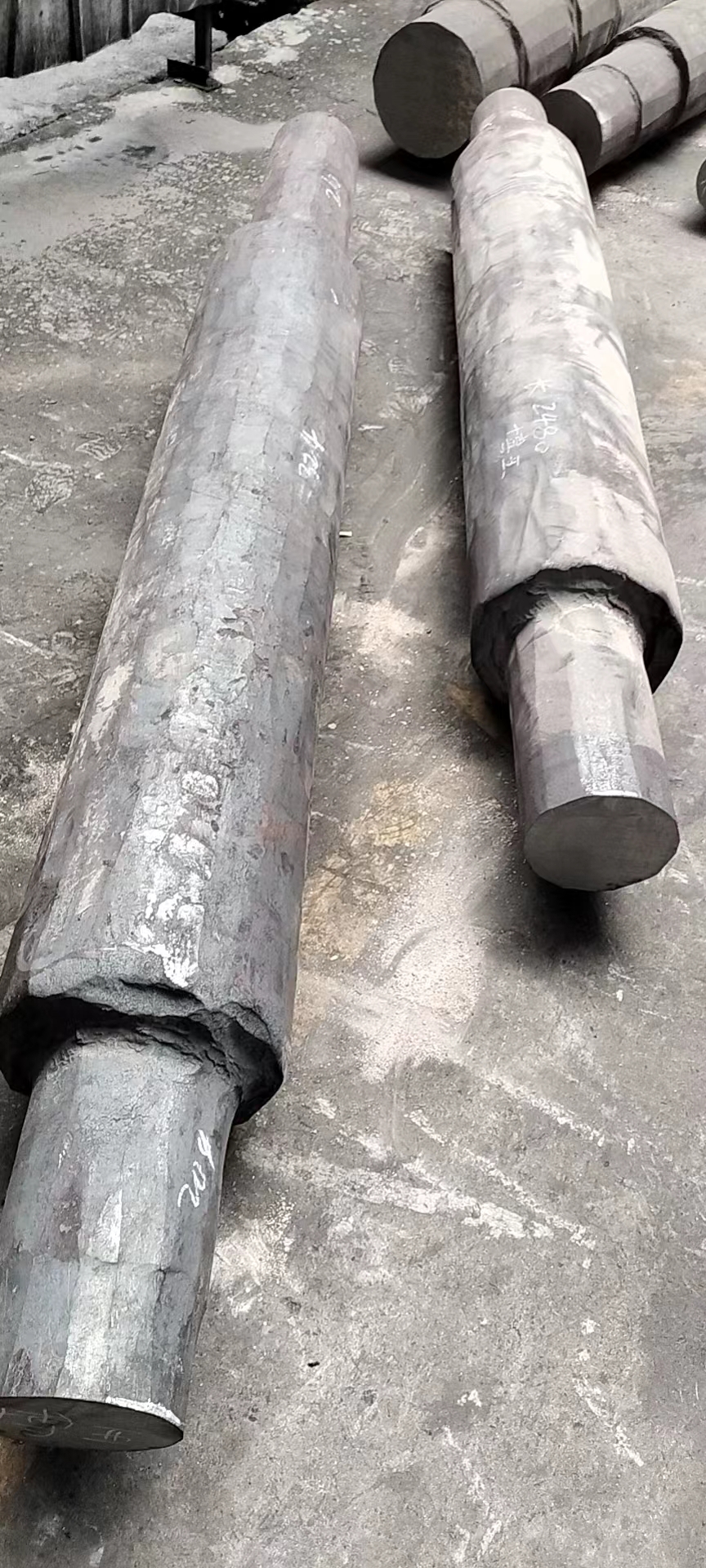Open die forging sequence and forging classification
2022-06-02
Free forging usually refers to manual free forging and machine free forging. Manual free forging mainly relies on manpower to forge the blank with simple tools, so as to change the shape and size of the blank to obtain the required forgings. This method is mainly used to produce small tools or appliances. Machine free forging (short for free forging), mainly rely on special free forging equipment and special tools to forge the blank, change the shape and size of the blank, so as to obtain the required forgings.
The forming characteristic of free forging is that the blank is completed by gradual local deformation on the flat anvil or between tools. Because the tool is in contact with the blank part, the power of the equipment required is much less than that of the die forging equipment producing forgings of the same size, so free forging is suitable for forging large forgings. Such as ten thousand tons of die forging hydraulic press can only die forging hundreds of kilograms of forgings, and ten thousand tons of free forging hydraulic press can be forged up to a hundred tons of large forgings.
The free forging process of any forging is composed of a series of deformation procedures. According to the deformation nature and degree of the process, the free forging process can be divided into three types: basic process, auxiliary process and finishing process.
The process of changing the shape and size of the billet to obtain the forging is called the basic process. The basic procedures of free forging are upsetting, drawing, punching, mandrel reaming, mandrel drawing, bending, cutting, dislocation, torsion, forging and so on. In order to complete the basic process to make the billet pre-produce a certain deformation of the process is called the auxiliary process, such as ingot to edge, prepressing clamp, subsection indentation, etc.
Used to refine the size and shape of the forgings, eliminate the surface of the forgings uneven, crooked, etc., so that the forgings completely meet the requirements of forging drawing work is called the dressing process, such as drum round, flat end face, bending straightening, etc. The amount of deformation in the finishing process is usually very small.
Free forging is a universal technology, it can forge a variety of forgings, forgings shape complexity is very different. In order to facilitate the arrangement of production and formulate process specifications, the hafnium forgings should be classified according to the characteristics of forging process, that is, the forgings with the same shape characteristics and similar deformation process are classified as a class. According to this, free forging can be divided into six categories: cake forging, hollow forging, shaft forging, crankshaft forging, bending forging and complex shape forging.


The forming characteristic of free forging is that the blank is completed by gradual local deformation on the flat anvil or between tools. Because the tool is in contact with the blank part, the power of the equipment required is much less than that of the die forging equipment producing forgings of the same size, so free forging is suitable for forging large forgings. Such as ten thousand tons of die forging hydraulic press can only die forging hundreds of kilograms of forgings, and ten thousand tons of free forging hydraulic press can be forged up to a hundred tons of large forgings.
The free forging process of any forging is composed of a series of deformation procedures. According to the deformation nature and degree of the process, the free forging process can be divided into three types: basic process, auxiliary process and finishing process.
The process of changing the shape and size of the billet to obtain the forging is called the basic process. The basic procedures of free forging are upsetting, drawing, punching, mandrel reaming, mandrel drawing, bending, cutting, dislocation, torsion, forging and so on. In order to complete the basic process to make the billet pre-produce a certain deformation of the process is called the auxiliary process, such as ingot to edge, prepressing clamp, subsection indentation, etc.
Used to refine the size and shape of the forgings, eliminate the surface of the forgings uneven, crooked, etc., so that the forgings completely meet the requirements of forging drawing work is called the dressing process, such as drum round, flat end face, bending straightening, etc. The amount of deformation in the finishing process is usually very small.
Free forging is a universal technology, it can forge a variety of forgings, forgings shape complexity is very different. In order to facilitate the arrangement of production and formulate process specifications, the hafnium forgings should be classified according to the characteristics of forging process, that is, the forgings with the same shape characteristics and similar deformation process are classified as a class. According to this, free forging can be divided into six categories: cake forging, hollow forging, shaft forging, crankshaft forging, bending forging and complex shape forging.


X
We use cookies to offer you a better browsing experience, analyze site traffic and personalize content. By using this site, you agree to our use of cookies.
Privacy Policy



